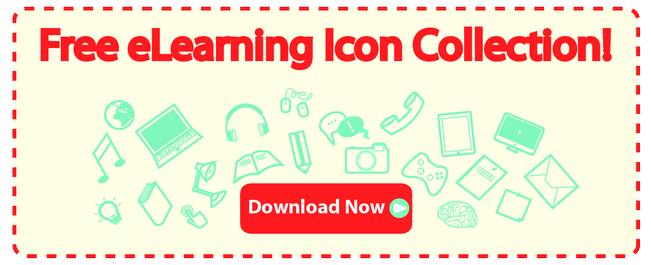There are a lot of opinions and thoughts for how to create engaging eLearning courses. That's why we have decided to collect some expert advice to engage learners. We've highlighted tips from top eLearning experts, on strategies you can put into practice very quickly. This post is written considering the latest ebook from the eLearning Guild, 68 Tips for eLearning Engagement and Interactivity, where industry specialists gathered, including Cammy Bean, Sean Bengry, Tom Bunzel, Paul Clothier, Sarah Gilbert, Amy Jokinen, and Kevin Siegel.
Learn how you can create engaging eLearning immediately through some advice from these three figures:
 1) Appeal to the learners’ natural curiosity first.
1) Appeal to the learners’ natural curiosity first.
Amy Jokinen, Training & Development Specialist, considers that to be truly engaging in eLearning, we must appeal to the learners’ natural curiosity. She adds, “In eLearning, we often associate engagement with interactivity, quizzing, and games, but to be truly engaging, we must appeal to the learners’ natural curiosity first.” In brief, we can say that in order to have motivated learners, their curiosity must be stimulated and sustained.
What to Do Today
Through the entire course you should seek to build curiosity. In other words, give learners something to be curious about. For example, wrap a storyaround the content, use supportive elements such as interesting graphics, or any kind of event that introduces conflict. Basically, without curiosity, all interactive means in your course become nonesense.
 2) Engagement CAN exist outside interaction!
2) Engagement CAN exist outside interaction!
As eLearning professionals, we use to think that engagement can’t exist without interaction. Sean Bengry, Learning Strategy and Design Manager at Accenture Academy, proves us wrong. He observes “Engagement can exist outside of interaction. Just think of your favorite movie or book: When you were watching it or reading it, did you really need to click on something, talk to someone else, or receive feedback to be engaged?"
Interactivity should be meaningful to the user and not just clicking for its own sake. So, the key to creating truly interactive eLearning isn't about just clicking the next button. The best type of interactivity is relevant content. The best way to define interactivity in eLearning is: "It's not about how someone interacts with the interface, but how the interface interacts with the person's mind."
What to Do Today
Work to keep your audience engaged by offering energetic and engaging content. Find different ways to liven up the course with the right measure of interactivity. Your courses should be all about getting learners feeling, acting and connecting.
-
Make learner stop and think. This can be as simple as asking the learner a question.
-
Hook learners in with a strong emotion or even a strong image. Emotional experiences can definitely cause reactions in the learner's mind.
-
Immersive scenarios are a great way to create meaningful interactivity too.
 3) Always remember there is a human being who will be sitting at that computer…
3) Always remember there is a human being who will be sitting at that computer…
Regardless of the topic or type of course you are creating, learners are the protagonist. However, the great irony of eLearning is that we often forget about them very frequently.
Cammy Bean encourages all eLearning professionals to ask themselves “would your learners thank YOU for this?” before publishing, and that’s a great gut check for all of us before our courses go live to learners. She reminds us how there is a human being who will be sitting at that computer, working his or her way through that content you have crafted. Just remember: without a focus on the learner, eLearning cannot take place.
What to Do Today
As Cammy says "Pretend you’re having a conversation with that person in a coffee shop, and then write it that way! Forget the passive, intellectual academic speak of learning objectives and corporate communications. Instead, make your learning experience a personal one and talk directly to the learner. When we feel like an online experience is a conversation, we tend to pay more attention.”
The best piece of advice you can have is to put yourself in your learner’s shoes and experience, as far as possible, what the learning experience is like for them, in order to understand how it can be done better. Would you sit through an hour of text-dense screens and actually learn anything? Probably not!
What other tips have others shared with you that have helped you immediately improve your eLearning content?




